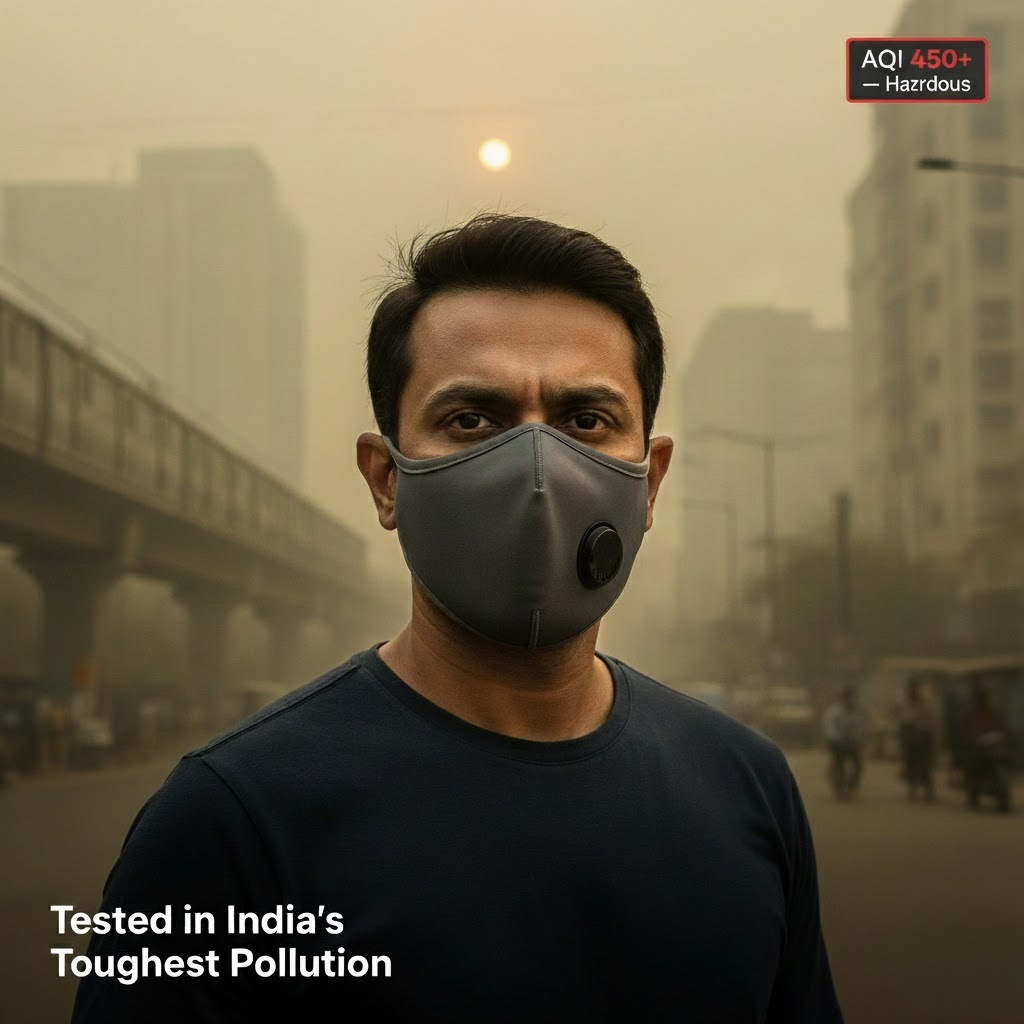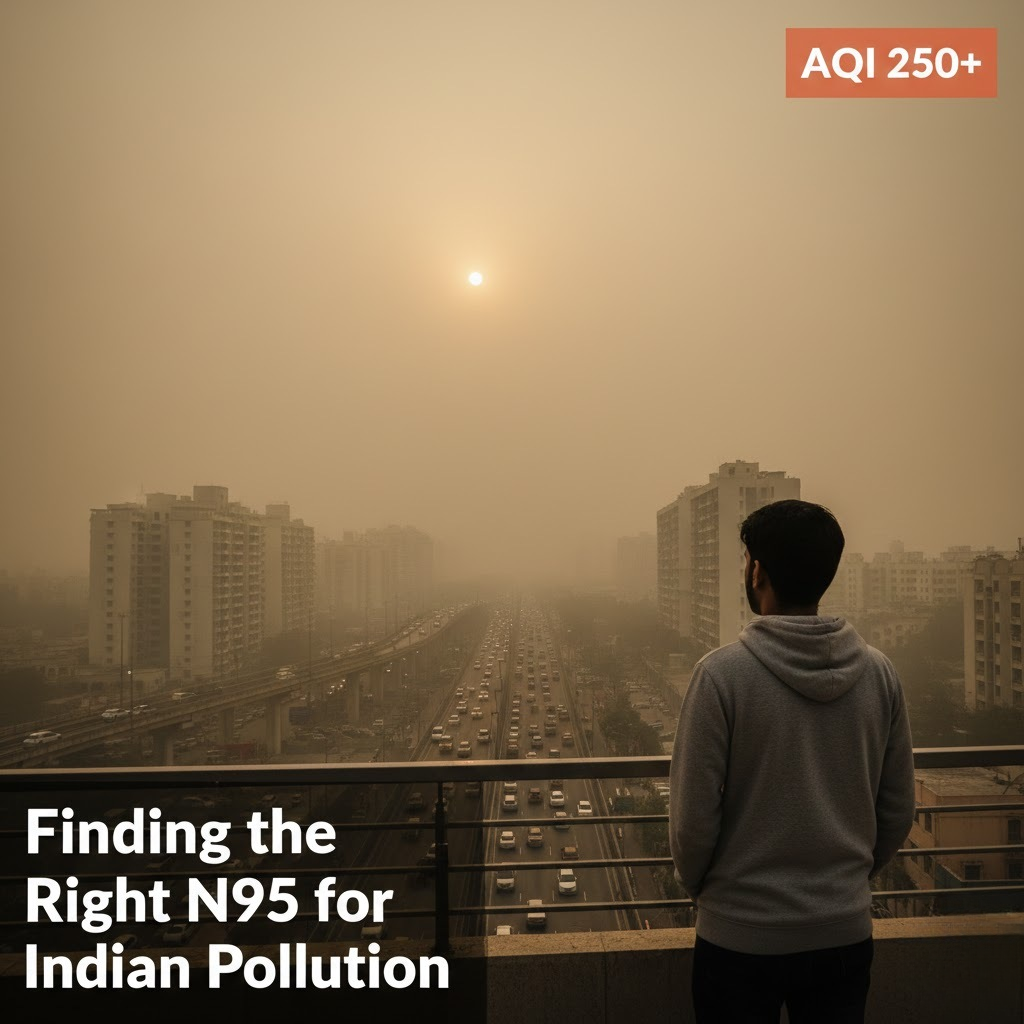Your phone shows an AQI of 72 this morning. Your neighbor says that's fine. Your colleague with asthma disagrees.
Who's right?
Understanding what counts as good air quality isn't just trivia – it affects whether you should exercise outdoors, if your kids can play in the park, and how you feel all day.
What Is Considered a Good AQI?

Numbers between 0-50 put you in the green zone. That's where health risks from breathing outdoor air stay minimal.
The measurement goes up to 500. Smaller numbers signal cleaner air. Hitting 50 or under? Most people can breathe that without issues.
Fifty marks an important split. Under that number, you're usually fine. Over it, and watching air quality becomes more important.
Can You Ever See Zero AQI?

Zero exists on the scale. You won't spot it in actual air, though.
Iceland leads the world with PM2.5 around 3.4 micrograms per cubic meter. That works out to roughly 14-20 on the index – still excellent, just not zero.
Natural particles float around everywhere. Spring brings pollen. Oceans kick up salt. Soil releases dust. These things exist without human activity.
Getting to zero would need air with literally nothing in it. Labs can create that. Nature can't.
What Are Safe AQI Levels?
Staying under 100 works for most people's health. That's the safe air quality index territory where problems stay rare.

0-50 (Green) – Good
This range delivers healthy AQI conditions. Kids play without issues. Seniors walk comfortably. People managing asthma function normally.
51-100 (Yellow) – Moderate
You're still in safe AQI territory if your lungs work well. Someone with severe breathing conditions might ease off marathons. Otherwise? Life goes on as usual.
Breaking into triple digits changes things. Air becomes unhealthy above 100 – vulnerable people feel it first, then everybody else as readings climb.
Which Indian Cities Have the Best Air Quality?
Finding good air quality in India requires some hunting, but clean air exists.

Cities with Cleaner Air:
-
Aizawl in Mizoram tops the India air quality rankings consistently
-
Kohima in Nagaland gets benefits from elevation and limited factories
-
Shillong sits in fresh mountain air
-
Mysore maintains better readings despite its size
-
Coimbatore keeps pollution lower than major metros
Why These Places Breathe Easier: Fewer cars on roads. Less industrial output. Hills and valleys that move air instead of trapping it. More trees and green spaces. Plus, smaller populations than places like Mumbai or Bangalore.
Near the Coast: Ocean cities during monsoon often drop into moderate or good ranges. Sea breezes and rainfall team up to push pollutants out.
Even India's cleanest cities rarely stay in the 0-50 green zone all year. Most bounce around 50-100 in the yellow moderate range. Compared to winter readings above 400 in major metros, though? That difference matters hugely.
Is 100 AQI Good or Bad?
Think of 100 as a dividing line.
Under 100? Most folks handle it without problems. Over 100? Health effects start appearing.
Marathon runners might barely notice 100. Someone tracking their asthma? They've probably already adjusted their day around it.
That specific number separates "acceptable for most" from "time to take precautions." It's basically the safe AQI level threshold.
How Does Healthy AQI Vary by Person?
Here's the thing about air pollution – your neighbor might feel fine while you're coughing.
Most healthy adults who exercise? They handle readings around 150 without major drama. Sure, at 120 you might get that weird chest tightness mid-run, but it's not stopping you from working or living your life.
Kids, though? Completely different situation. They're still building lung capacity, and their breathing rate is insane compared to adults. Planning a cricket match or park day? Check that it's a green or yellow day first.
Your parents or grandparents need extra caution here. Hearts and lungs lose resilience over the years – it's just biology. Staying under 100 can mean the difference between feeling okay and feeling exhausted.
Managing asthma or COPD? Yeah, even 75 can mess with your day. You might find yourself choosing the gym treadmill over your usual neighborhood route. Listen to your body on this one.
Pregnant? The studies coming out lately are honestly concerning. What you breathe seems to matter for your baby's development more than we realized even five years ago.
Bottom line: good air quality under 50 works for everyone walking around. That middle zone from 50-100? Totally depends on what your body can handle.
Does India Ever Have Good AQI?
Yes, though timing and location matter a lot.
Where Air Gets Better:
-
Coastal spots during monsoon months
-
Hill stations at higher altitudes
-
Towns away from major industrial zones
When Air Gets Cleaner:
-
July through September when monsoons arrive
-
Months right after monsoon season wraps up
-
Morning hours before rush hour traffic
Areas with Challenges:
-
Major northern metros October through February
-
Industrial hub cities throughout the year
-
Regions near large-scale agricultural activities
Even metros occasionally hit yellow or green during peak rainy season. Those good AQI days happen – just not reliably or consistently.
How Do You Check If Air Quality Is Good?
Takes like 30 seconds, tops.
BeyondAQI gives you actual neighborhood data across India. This matters because – and I can't stress this enough – the air in Gurgaon can be totally different from Noida even though they're both technically NCR. City-wide averages hide too much.
Your phone probably already shows AQI in the weather app. Check there first.
Or just Google "air quality near me" and boom, you've got your answer.
Want to make it even easier? Set up alerts. Your phone will ping you when things get unhealthy. No need to remember to check.
What Should You Do When AQI Is Good?
Use those days!
When you see 0-50, that's your window. Go for a run. Take your bike out. Play basketball. Your lungs aren't going to complain.
Open some windows while you're at it. Fresh air circulation actually helps when the outside air is genuinely clean.
Got kids? Let them loose outside on good air quality days. They need that outdoor time anyway.
In cities where clean air comes and goes, you've gotta grab these opportunities when they show up.
Why Does AQI Get Bad in Winter?
Multiple weather and activity patterns combine badly.
Trapped Air: Cold air near the ground gets stuck under warmer air higher up. Pollutants can't rise and scatter – they accumulate instead. Northern regions experience this phenomenon heavily.
Still Weather: Winter often brings calm conditions with less wind. Pollutants that would normally blow away just linger.
Heating Emissions: When temperatures drop, people burn wood, coal, or biomass. Each source adds to overall pollution.
Why This Actually Matters
Air pollution kills about 4.5 million people early every year worldwide. That's not some distant statistic – it affects how you feel right now.
Knowing what good air quality index numbers look like helps you pick the right days for running outside, protect your family members who've got health issues, understand why Tuesday felt awful but Wednesday was fine, and make better calls about when to go out.
A safe AQI isn't rocket science. Under 50? Good. Under 100? Acceptable. Over 100? Time to change what you're doing outside.
Check the number. Figure out what it means. Adjust.






Share:
How to Read AQI: Understanding Air Quality Numbers, Colors & Guide
N95 vs N99 Masks: Which Air Pollution Mask Should You Choose?
1 comment
vw70kh